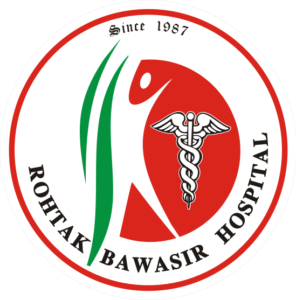Piles 101: Everything You Need to Know About Hemorrhoids


Updated on: 4th Jun 2024
Hemorrhoids, also referred to as piles, are enlarged veins in the lower rectum or surrounding the anus. They are a common ailment that millions of individuals experience globally. Hemorrhoids are often not life-threatening and can be easily treated with the right care, despite the fact that they can be excruciating and uncomfortable. You can better grasp piles’ causes, symptoms, treatments, and preventative actions with the aid of this extensive information.
What Are Hemorrhoids?

There are two forms of hemorrhoids: internal and external. External hemorrhoids are felt and seen beneath the skin around the anus, but internal hemorrhoids are found inside the rectum and are not visible. A number of circumstances can lead to increased pressure in the anus and rectum, which can swell the veins and cause hemorrhoids.
Causes of Hemorrhoids
Several factors can contribute to the development of hemorrhoids:
- Straining During Bowel Movements: Among the most frequent causes is this one. Straining can cause edema by putting more strain on the rectum and anus veins.
- Chronic Constipation or Diarrhea: Both illnesses have the potential to produce severe straining and discomfort, which can lead to hemorrhoid development.
- Sitting for Long Periods: The strain on the anal veins can rise with prolonged durations of sitting or using the restroom.
- Obesity: Carrying too much weight around might exacerbate the pressure on the pelvic and rectal veins.
- Pregnancy: Because of the increased strain on the abdomen and hormonal changes during pregnancy, women are more prone to hemorrhoids.
- Low-Fiber Diet: A low-fiber diet might cause constipation, which makes bowel motions difficult.
- Heavy Lifting: Heavy lifting on a regular basis might raise abdominal pressure and result in hemorrhoids.
- Aging: Hemorrhoids are more likely to occur as we age because the tissues supporting the veins in the rectum and anus might weaken and strain.
Symptoms of Hemorrhoids
Depending on where and how severe they are, hemorrhoids can present with a variety of symptoms. Typical signs and symptoms include of:
- Rectal Bleeding: Hemorrhoids are frequently indicated by bright red blood on the toilet paper, in the stool, or in the toilet bowl.
- Itching and Irritation: Around the anus, hemorrhoids can cause discomfort and irritation.
- Pain and Discomfort: External hemorrhoids may cause discomfort, particularly when seated or having a bowel movement.
- Swelling: A hemorrhage external to the anus may be indicated by a bulge or swelling nearby.
- Mucus Discharge: A mucus flow from internal hemorrhoids may cause irritation and inflammation.
Diagnosing Hemorrhoids
For a precise diagnosis, it’s critical to speak with a healthcare professional if you exhibit hemorrhoidal symptoms. A physical examination by a physician may involve the following:
- Visual Inspection: Visual inspection is often the most reliable method of diagnosing external hemorrhoids.
- Digital Rectal Examination: To check for internal hemorrhoids, a medical professional may stick a gloved, lubricated finger into the rectum.
- Anoscopy: During this treatment, internal hemorrhoids are checked for in the lower rectum and anus using a short, illuminated tube.
If the patient is over 50 years old or there is severe rectal bleeding, further testing such as a sigmoidoscopy or colonoscopy may be advised to rule out other illnesses.
Treatment Options for Hemorrhoids

The treatment region is efficiently sterilised by the high energy of the laser beam, which lowers the risk of infection and speeds up healing.
Home Remedies
- High-Fiber Diet: Eating a high-fiber diet can assist in reducing straining during bowel motions and softening stools. Good sources of fiber include whole grains, legumes, fruits, and vegetables.
- Hydration: Constipation can be avoided and easy bowel movements can be achieved by drinking lots of liquids.
- Warm Sitz Baths: Relieving discomfort and reducing swelling can be achieved by taking frequent 10-to 15-minute warm baths throughout the day.
- Topical Treatments: Itching and soreness can be relieved, inflammation can be decreased, and suppositories and ointments available over-the-counter can help.
- Cold Compresses: Ice packs might help numb the discomfort and reduce swelling in the affected area.
Medical Treatments
- Rubber Band Ligation: During this operation, the base of an internal hemorrhoid is wrapped with a thin rubber band to cut off its blood supply, causing the hemorrhoid to contract and fall out.
- Sclerotherapy: The hemorrhoid is injected with a chemical solution, which causes it to contract.
- Infrared Coagulation: With this treatment, the hemorrhoid clots and shrinks due to the application of infrared light.
- Hemorrhoidectomy: In extreme situations, the hemorrhoid may need to be surgically removed. Large external hemorrhoids or those that don’t respond to conventional therapies are often the only cases when this surgery is used.
- Stapled Hemorrhoidopexy: Hemorrhoidal tissue is stapled back into place during this treatment, which causes the hemorrhoid to shrink and lose blood flow.
Preventing Hemorrhoids
Even if they can’t always be avoided, the following healthy behaviors can lower the chance of getting hemorrhoids:
- Eat a High-Fiber Diet: Try to consume at least 25–30 grams of fiber per day to avoid constipation and maintain soft stools.
- Stay Hydrated: To assist maintain regular bowel motions, drink a lot of water.
- Exercise Regularly: Engaging in physical activity can alleviate vein pressure and help avoid constipation.
- Avoid Straining: When having bowel motions, take your time and try not to strain. Do not hesitate to leave if you have the urge.
- Limit Sitting Time: Avoid spending a lot of time sitting, especially while using the restroom, and take breaks.
- Practice Good Hygiene: In order to avoid inflammation and itching, keep the anal area dry and clean.
Conclusion
Although they can be painful and uncomfortable, hemorrhoids, often known as piles, are typically treatable with the right care. It is crucial to comprehend the origins, signs, and available treatments for hemorrhoids in order to manage them successfully. You may avoid and manage hemorrhoids and ensure a higher quality of life by implementing healthy lifestyle practices and getting medical advice when needed.
Meet Our Specialists

Dr. Raj Kumar Garg (B.A.M.S.)
40+ Years of Experience

Dr. Rahul Garg (B.A.M.S.)
15+ Years of Experience

